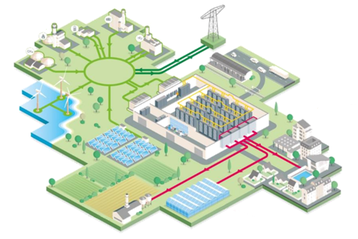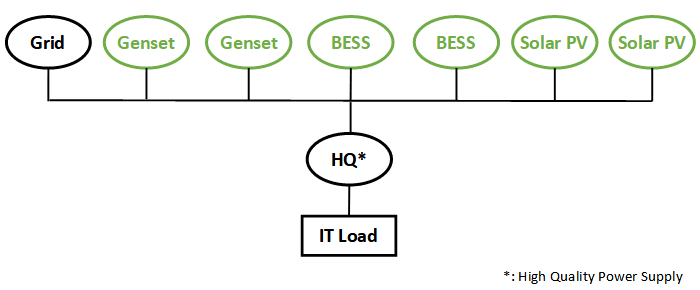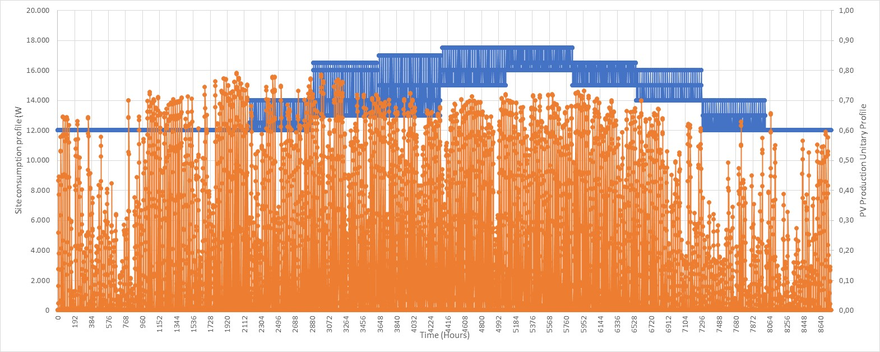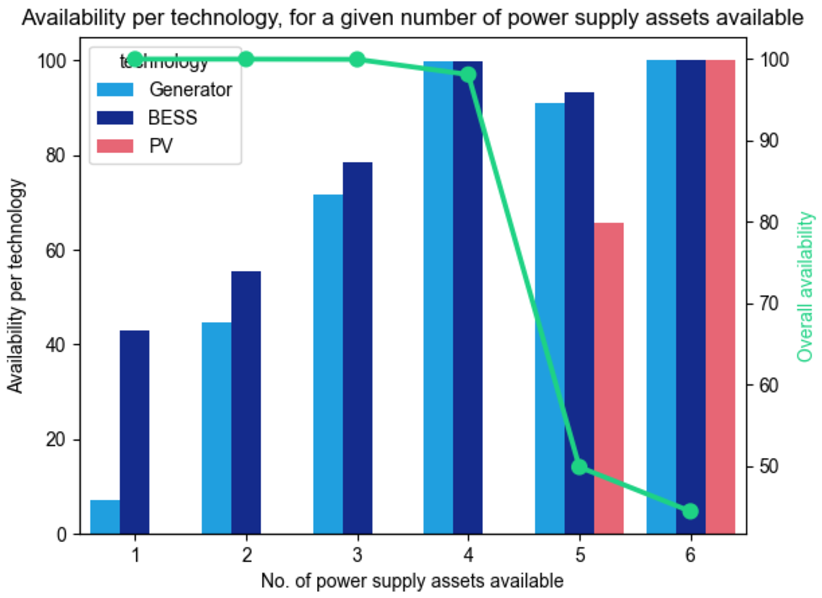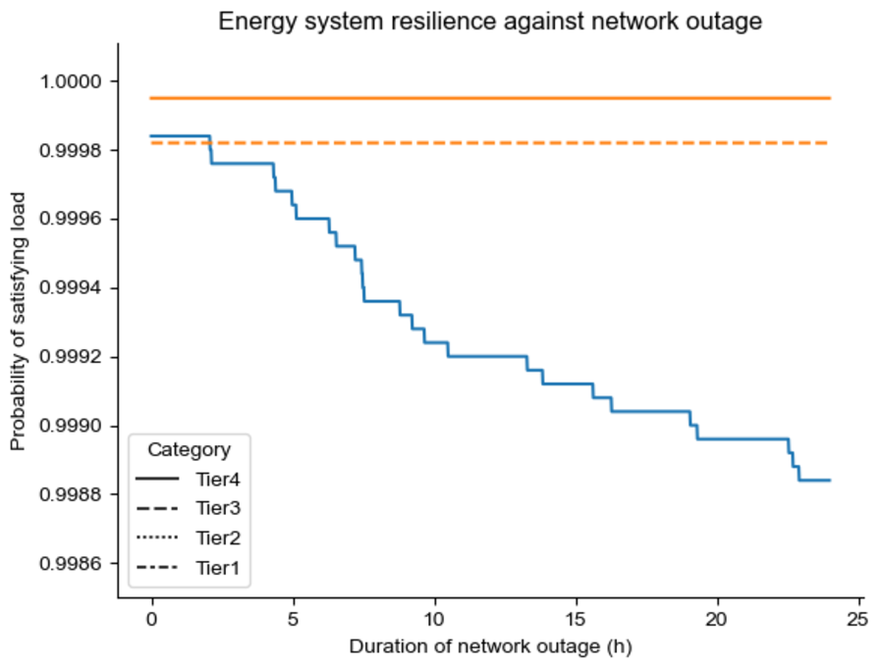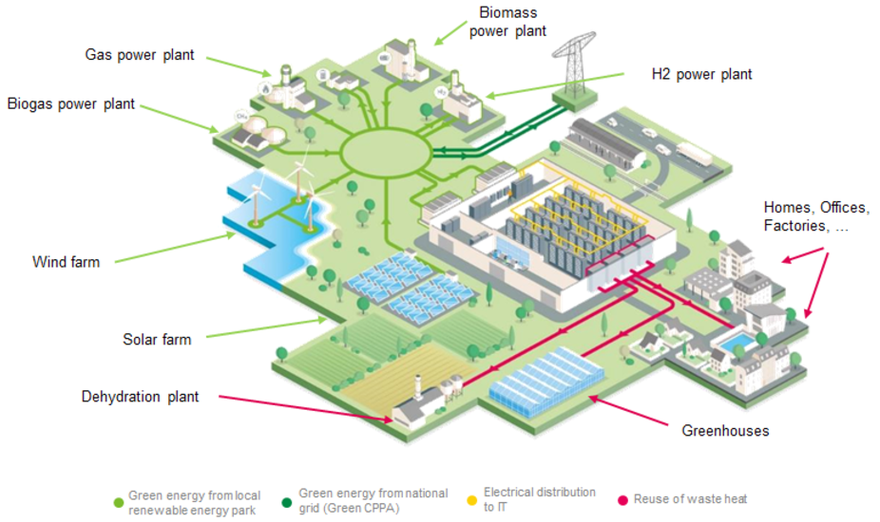You don’t need to search too far to find news about businesses across Europe facing unpleasantly steep increases in their electricity and gas prices. Some are being landed with ten times hikes in their electricity bills compared to just two years ago.
And then there’s the risk of shortages, brownouts and rationing – of both electricity and gas – should winter prove to be particularly cold and inclement. If the uncertainty all this has wrought to energy supplies in Europe weren’t already bad enough, now two key pipelines that in ordinary times would be conveying gas from Siberia to Europe appear to have ruptured, possibly due to sabotage, adding to the sense of crisis.
While data center operators are unlikely to be seen opining about their power bills on social media or television news bulletins, they’re still subject to the same market forces and will be facing bills about to rise by similar eye-watering percentages.
Indeed, data centers are highly energy intensive facilities with operations expected to be running on a 24/7 basis, all year long. Even if highly reliable in most countries where data centers are running, the 100 percent availability of the grid can’t be taken for granted, with both planned and unplanned grid outages, occasional storms, sometimes even fires, and so on.
That dependence on the grid implies the need for back-up. For years, data centers have invested in back-up systems mainly based on diesel generators, with battery-based UPS to cover the gap between the power going off and the generator starting up.
This conventional data center back-up arrangement has established a high level of industry confidence in its capability to overcome almost any grid anomalies or failures. However, data center operators’ ‘return on experience’ highlights the fact that, sometimes, back-up power generators do not always start-up as expected. As a consequence, relying on the main power supply is the key to increasing data center resilience.
That’s why a handful of data centers have established a dual power connection to the grid, with each grid power source being connected to a different grid infrastructure to reinforce 100 percent availability. But such an expensive approach is not even conceivable for most data centers and remains rare.
Moreover, in no case does this traditional approach take into account the need for carbon emission reductions, or for enabling future technologies’ integration into green data centers.
A new approach to the energy model
One day, the grid may be able to supply completely zero carbon energy, but it’s hard to see when this will be, regardless of any ambitious deadlines set by politicians. To achieve net zero, the grid will have to be supported not only by renewable assets, like solar panels or wind turbines, but also by energy storage systems capable of balancing the intermittency of renewable energy production. This will take a long time, and will require the development of alternative sources of energy.
Fortunately, a disruptive energy model involving on-site renewable assets, as well as storage assets, as part of a local microgrid could be the way to reach the data center industry’s ambitious carbon reduction targets, while ensuring continuing high availability and avoiding exposure to grid outages or other external events, improving sustainability while staying competitive.
Renewable and storage assets part of a local microgrid
With this new approach, renewable generation and storage assets are integrated into a microgrid, privately operated and directly connected to the data center. To ensure resilience, the local microgrid is designed to provide high availability, as described in Uptime Institute Tier requirements.
For each of the power systems forming part of the microgrid – whatever the type of network – the gensets, UPS, battery energy storage system (BESS) or the renewable generation assets are defined as energy sources for the IT load. At any given time, each are able to sustain this IT load for a given duration – from a few seconds to a few minutes for the UPS; for a few hours to a few days for the gensets, depending on the fuel storage capacity; and, from a few minutes to few hours for the BESS, combined with any of the renewable energy sources available based on intermittency of supply.
Depending on the energy demand, the level of resiliency, the location, and local regulation, different schemes of renewable sources could implement this renewable generation plan. Large-scale penetration of renewable generation assets in the energy system of the data center will require the installation of specific components to ensure power quality and to limit voltage and current fluctuations to ensure a high quality power supply.
How a local microgrid matches or exceeds high availability requirements
Let’s analyze the availability of such an energy system.
For any back-up system in a traditional data center, we have to admit that the different equipment of the microgrid may entail some technical issues. In a traditional data center, we use a terminology stating that “N” is the number of units of equipment required to satisfy the load. In order to satisfy the high availability constraints, more equipment is installed to manage these potential equipment failures. In classical systems based on diesel generator back-up, different availability scenarios are usually considered:
- N+1 (typical Tier 3 criteria): adding one more equipment. For instance, if N stands for three diesel generators, a N+1 availability will represent the installation of four diesel generators;
- 2(N+1) (typical Tier 4 criteria): full redundancy of the equipment, duplicating electrical path of the equipment and adding one more in case of failure. For instance, if N stands for three diesel generators, a 2(N+1) availability will represent the installation of eight diesel generators.
When it comes to a microgrid, we can look at another scenario known as “N+k”, where k represents the additional power systems capable to satisfy the load. In other words, these k additional items of equipment will not (only) be the gensets but also all the other assets forming part of the microgrid, such as photovoltaic panels, hydrogen-based systems, energy storage, and so on. The main added value is to merge what we previously called main supply and back-up supply in a traditional data center, into one unique system capable of optimizing value as much as possible in the production of energy, while ensuring high availability.
Illustrative N+K case study
To illustrate the concept of microgrid high availability, here is a case study analysis for a theoretical 10MW data center supplied by:
- Two gensets of 10MW each;
- Two blocks of photovoltaic (PV) panels, 11 MW capacity per block;
- Two blocks of BESS, 10 MW capacity per block.
The following figure illustrates the energy demand of this theoretical data center (in blue), depending on the time (over a full year). The concurrent PV production (unitary profile) is displayed in orange. The intermittency of the renewable energy component is one of the most challenging aspects of meeting the high availability criteria required for the data center.
This figure highlights that powering a data center with intermittent energy, like solar PV, also requires energy storage to compensate for the period with no renewable energy source (RES) production. When PV production is greater than the data center’s energy needs, the batteries can be charged or the energy surplus can be sold on the wholesale market. Last, but not least, in case of grid outage or genset failure, the energy storage can also bridge power failure.
In this new energy model, the main and back-up supplies are merged and represent only one global system improving the efficiency, the resiliency, and the economics, by running all the year and not only during grid outage.
The availability and resilience of these alternative systems (gensets, PV and BESS in this illustrative case) have been evaluated using a statistical approach based on the risk of equipment failures, time to repair and/or network outage. The graphs below show that they can be designed based on renewable assets, supporting the industry’s decarbonization objectives, but still matching its high availability constraints.
The graph below illustrates the percentage of time where the different technologies are contributing to the data center power load, therefore enabling a specific N+k availability.
The horizontal axis shows the total number of power supply assets available. The left vertical axis measures the percentage of time when the different technologies form part of a specific N+k availability (represented by the bars on the chart with one color per technology type). The green line, measured on the right vertical axis, measures the percentage of time where at least N+k assets are available. In this example, six assets are all available for 45 percent of the time, and at least four are available for almost 95 percent of the time to supply energy to the data center (due to the PV capacity factor estimated around 30 percent).
This second graph illustrates the period of autonomy of the whole energy system when there is a network outage combined with power supply asset failures.
The horizontal axis represents the duration of the network outage (in hours). The vertical axis shows the probability that the local microgrid will satisfy the energy needs of the data center. The graph has been generated using a generic example for a huge amount of scenarios with different combinations of asset failures and network outages over the year. Asset failure scenarios are based on the mean time to repair and mean time between failures.
The probability of satisfying the load of the data center takes into account the energy demand hourly profile, energy production hourly profile per asset, a random simulation of grid outage events of 24 hours over the year and several scenarios of asset failures.
Availability and resilience objectives are to be considered in the design and sizing constraints of a microgrid supplying a data center. In this illustrative case, the system is capable of meeting Tier 3 criteria for two hours.
The ‘Energy system resilience against network outage’ graph illustrates how the longer a data center outage lasts, the more likely it will fail to meet its Tier requirements and won’t meet the power needs of its IT. The right combination of power supply assets and precise optimization of installed capacity will enable the data center operator to meet its resilience objectives according to the desired Uptime Institute Tier criteria.
Depending on local constraints, increasing the capacity of gensets, RES production or energy storage will enable operators to confidently meet higher availability and higher survival times, while providing support to the grid and supplying energy to its surrounding communities.
How a microgrid can benefit the data center’s neighborhood
In the traditional data center energy arrangement, its power supplies are its own costly business. In particular, the back-up systems are a burden from a sustainability point of view, the genset part of these back-up systems running on fossil fuels today and, thus, not compliant with the industry’s zero carbon objectives. Furthermore, they represent an addition cost from an economic point of view, as well. Indeed, they require large amount of CAPEX and OPEX, while they do not provide any other value than covering the risk of a potential power failure, as they are not designed to run continuously.
To address this, data centers can be positioned in local microgrids, optimizing multiple criteria to match their sustainability needs (in terms of carbon emission reduction and use of renewable energy), their high availability requirements and the economics of the energy system.
This new energy model is not only a way to solve the sustainability challenges of data centers while providing higher availability, but can also help address the wider economic challenges of going green.
Indeed, even if a microgrid is primarily established just to meet the data center’s energy needs, it can also be used to act as a local energy and services provider, creating additional business values such as:
- Capacity and frequency regulation services to the main grid;
- Supply of renewable energy to the main grid in case of on-site production surplus;
- Supply of electricity for vehicle recharging infrastructure in its vicinity;
- Supply of H2 in case of on-site production surplus;
- Waste heat export to the local communities (residential, commercial or industries, greenhouses, …), through a local heating network.
Therefore, a local microgrid embedding renewable assets with a storage capacity may become an important component of a zero carbon energy system, benefiting both the data center and the communities nearby. Moreover, in certain locations where a connection to a national grid is not the right approach due to technical, economic and even political reasons, it might become the only way to provide a zero carbon energy.
Available now, not tomorrow
Merging the functions of main supply and back-up into a microgrid based on renewable energy sources enables data centers to achieve their sustainability objectives, to increase their resiliency against external events (such as grid outage and equipment failure), while generating additional revenues by providing new services to the grid and to local communities.
Such high availability green energy systems are now a reality and Engie is committed to developing these solutions in order to co-construct a greener future with data center operators.
In further studies, it could be envisioned to get rid of the gensets, the renewable resources being capable of achieving the high availability requirements due to their size, production time and the additional energy storage systems.
But that is another story we are working on.
For more information about microgrid technology that you can implement today, go to Engie's dedicated data center microgrids portal to find out everything you need to know.
More from Engie
-
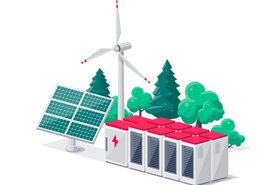
Sponsored How do microgrids support net-zero carbon data center objectives
How to match electricity consumption with carbon-free energy generation on an hourly basis, generate revenue and achieve high resiliency for your data center
-

Sponsored Actions over (buzz)words
What does it actually mean to be green?
-
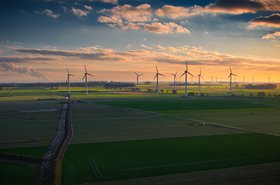
Sponsored Will decarbonization impact future data center design?
A closer look at the prosumer approach, with Eric Lamendour of Engie

